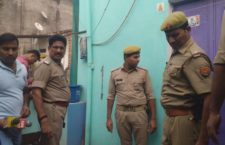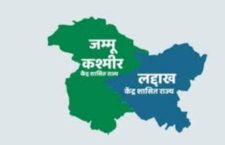Sanuj’s family has been living in a mud house in Mawaikal village, Mau block of Chitrakoot district for over three generations. This year like most other years, his village has been denuded with the floods. And with every flood, his house is swept away and has to be rebuilt. The costs of such an exercise, year after year, is too much for a family like his to bear, “I earn 200-250 rupees, which is barely enough to eat. How am I supposed to build a house? We neither own land or farm our own food.”There are many such mud houses in the village that have been swept away, forcing its residents to makeshift tents. Because of its close proximity to the Yamuna, Mawai Kala gets affected the first and probably the worst, every time the monsoons exceed expectations in Bundelkhand, which is every 2 to 4 years. This means huge amounts of time, energy and hard-earned money being spent on reconstructing them again and again. It’s an endless cycle that the residents have been trapped in.
Rains have always played a strange and uncertain dynamic in a region such as Bundelkhand.
In this drought-affected region, rains are usually a sign of great hope. But with unrelenting monsoons such as the one this year, it has become something to be feared. The excess rainfall that had swollen the Ken and Betwa rivers eventually led to a flooding along the banks of Yamuna. Hundreds of lives have been lost and lakhs have been displaced in various parts of the state and the effect is felt deeply in the low-lying areas in Chitrakoot district, such as in Mawai Kala village.
Like Sanuj, Samanlaal too was born in the small mud house that is now lost in the flood. It has been replaced with a hastily put together shanty of mud walls and tarpaulin so that his family has some place to live. “The Block Development Officer (BDO) came to survey the situation but no arrangements have been made till now. We are staying in the tent and I have sent my daughter-in-law to stay with another family”, he says. Both Samanlaal and Sanuj have not received any benefits from the Pradhaan Mantri Awaas Yojana (PMAY) that would have ensured that they would get a pucca house that could stand the force of recurring catastrophes such as this. Pradhan Mantri Awaas Yojna is a scheme launched by the Central Government in 2015 with the aim of giving every Indian a pucca home with basic facilities by 2022.
Despite schemes like these, over 100 families in Mawai Kala still live in kaccha houses, and government help is conspicuously absent. When asked about what was his estimate of the damage done to such households by the floods, the Pradhan of the village, Ramnaresh conceded that around 16 to 17 houses have collapsed and 9 destroyed completely. “I have written to the administration and they will get compensation soon. Probably they have already received it in their bank accounts already , he counters. Around 85 houses have been allocated to the landless beneficiaries and he has requested for 165 houses more.“ As for the immediate help that is needed for the flood victims, the administration needs to grant my request and then they will get their housing too.”, he says.
The residents however show little faith in the administration. “The Pradhan hasn’t done anything to get us housing. They come when they need our vote and forget us soon after.“ says Sanuj. They have not heard anything about their status as beneficiaries for the PMAY-G scheme either. Sushila, whose house collapsed while her son and grandfather were inside the house, says they too haven’t got any PMAY-G support as they were promised.
When asked about this, the District Rural Development Agency (DRDA) Project Director Ajay Kumar Mishra said, “The loss of home due to floods is considered a natural catastrophe.” This makes the residents entitled to help from the District Administration. But due process requires making a list of those affected, the area surveyed and the people listed as rightful recipients before the scheme can be applied.The biggest problem in this scenario is the PMAY-G list for landless beneficiaries itself. Even though the scheme is aimed to help those without homes first, the list itself cannot be claimed to be absolute. “It is possible that there are many who are not on the list and are equally needy,” concedes the Director. As per him, 39,000 people have been added to the database with the help of Awaas+, an app for keeping track of the project development. But many still remain.
Till then, the residents often fend for themselves.“People whose houses are destroyed are asked to go and stay in school, but as soon as the water recedes they are told to leave, even if they have no place to live.”, informs Sanuj. For Shivdas, it means grabbing everything they can carry and finding higher grounds, probably all the way in Mau. “We take shelter on someone’s doorstep. The animals have to be kept away somewhere safe. We have to reach a safe place where the water levels haven’t risen.”
It is already October, and just like its notorious summers, winters in Bundelkhand are harsh and unforgiving. Behind Rajaram, another resident, stands a tent. It is two plastic sheets propped on a pole. Additional tarpaulins cover it for protection against the onslaught of rains. “I barely have anything left.”, he says pointing backwards. He knows that this shelter will not be of much use with the onset of cold. Everywhere the scene looks eerily similar, makeshift houses stand next to walls that have crumbled with the deluge. Tents made of many different plastic sheets and tarp cover small shelters that houses full families with small children and sometimes animals.
While the district administration wins accolades for their fulfillment for the PMAY-G, the ground reality for the residents of Mawaikala is still the same.
Reported by : Sunita Devi
Written by : Vatsala Bisen

